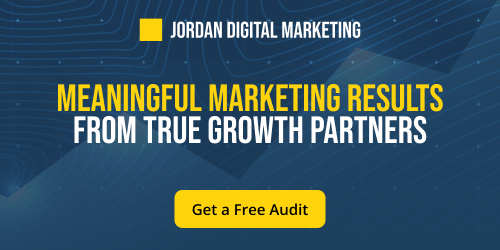Experienced PPC marketers might pine for the days of more control and levers to pull in Google Ads campaigns – and we do – but Performance Max campaigns are here, and they’re the way of the eCommerce search world now.
This isn’t terrible news for eCommerce advertisers; when they’re structured strategically, Performance Max campaigns have proven effective in finding and engaging new visitors who might not have been covered in more traditional search campaigns.
So what does strategic PMax campaign structure look like for eCommerce? Let’s explore.

Avoid running non-brand search and PMax campaigns in tandem
Non-brand search is never the highest-performing campaign type as it is, but when you run non-brand and PMax campaigns that are targeting the same products simultaneously, the algorithm tends to get confused, and performance for both campaign types suffers.
In recent instances where I was running PMax campaigns and re-introduced non-brand search, performance has taken a bit of a hit. And in those instances, because PMax has performed stronger than non-brand, I’ve simply turned off non-brand and let PMax carry the day.
Don’t segment new and existing customers
Nope, that’s not a typo. Do NOT segment new and existing customers no matter what your instincts are telling you. I’ve learned the hard way that this particular segmentation will just drive up costs and won’t prevent new customers from showing up in the “existing” segment anyway. That’s not all that surprising considering the limitations of cookies (which, for better or for worse, aren’t going away until 2025 but are still highly flawed).
Less segmentation leads to less confusion and an easier learning phase for the algorithm; although it’s scary to give up control, we need to let the algorithm do its job.
That said, whether your catalog is big or small, you should absolutely segment products with vastly different price points. For instance, if you’re selling $2,000 suits, don’t leave the $100 ties in the same campaign, or the Google algorithm will end up allocating your whole budget to the easier, lower-cost purchase.
Other audience segments to incorporate to find higher-value users
The more we can train the algorithm on our highest-value users and activities, the more effectively it will drive revenue. We’ve seen great returns in telling the algorithm to find:
- Cart abandoners
- Visitors who leave “best-seller” pages without purchasing
- Big spenders
- People who have viewed product videos
- People who have searched on top non-brand keywords
There may be more segments specific to your brand and campaigns; the trick is to take a full inventory of actions or user types that have proven to carry lots of value and make sure you’re identifying those for the algorithm to find.
This isn’t all that goes into great Performance Max eCommerce campaigns, of course. Product feed quality, creative, and messaging are all critical as well. But approaching your campaign structure with a smart mindset can build an extremely strong foundation for leveraging Google’s AI targeting.
If you’re curious about other nuances we’re using to drive eCommerce performance in the age of AI targeting, drop us a line!
